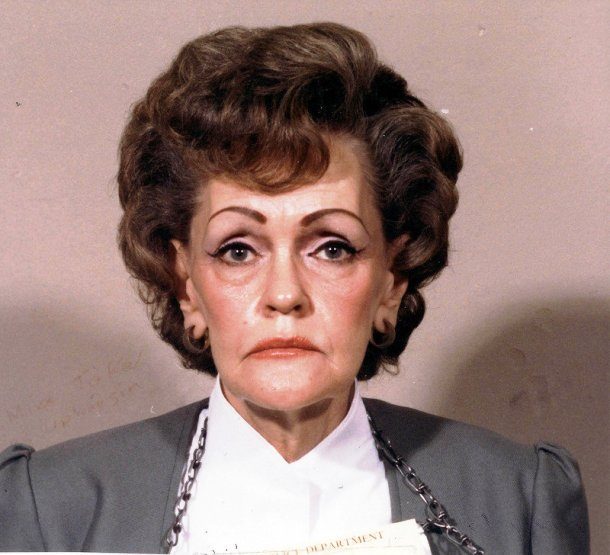Gertrude Baniszewski will forever be remembered as a figure of horror in American criminal history. Her chilling actions in the 1960s have left an indelible mark on the lives she touched and the justice system. The case of Gertrude Baniszewski is not just about her heinous crimes, but also a reflection of societal issues such as neglect, abuse, and the failure of the community to protect its vulnerable. In this article, we delve deep into her life, exploring the complexities of her character and the horrific events that unfolded under her roof.
The story of Gertrude Baniszewski is one that evokes a mix of revulsion and intrigue. The way she manipulated and abused her victims reveals chilling insights into the human psyche. While some may wonder how someone could descend into such darkness, others may seek to understand the underlying factors that contributed to her gruesome behavior. Through this exploration, we aim to shed light on the life of Gertrude Baniszewski and the tragedy that unfolded in her home.
As we navigate the details of her life and the atrocities she committed, it’s essential to remember the real victims of her actions. The narrative of Gertrude Baniszewski is not solely hers; it is also a cautionary tale about the impact of violence and neglect on young lives. Join us as we unravel the tangled web of Gertrude Baniszewski’s life, her motivations, and the consequences of her actions.
What is the Biography of Gertrude Baniszewski?
Gertrude Baniszewski was born on September 19, 1929, in Indianapolis, Indiana. Raised in a troubled household, she experienced a tumultuous childhood that likely influenced her later actions. As a young woman, Gertrude faced numerous challenges, including the pressures of motherhood and financial instability. Her life took a dark turn when she became the perpetrator of one of the most infamous cases of child abuse in American history.
| Personal Details | Bio Data |
|---|---|
| Full Name | Gertrude Baniszewski |
| Date of Birth | September 19, 1929 |
| Place of Birth | Indianapolis, Indiana, USA |
| Date of Death | June 16, 1990 |
| Nationality | American |
| Known For | Child Abuse and Murder |
| Crimes | First-degree murder, Child abuse |
What Were the Crimes Committed by Gertrude Baniszewski?
The most notorious crime associated with Gertrude Baniszewski is the brutal torture and murder of Sylvia Likens, a 16-year-old girl who was placed in her care. In 1965, Sylvia and her sister were sent to live with Baniszewski after their parents were unable to care for them. What began as a seemingly normal living arrangement quickly devolved into a nightmare for Sylvia.
Gertrude subjected Sylvia to horrific abuse, both physical and emotional. She was beaten, starved, and humiliated, all while Gertrude encouraged her children and neighborhood kids to join in the torment. The abuse escalated to the point where Sylvia was tortured daily, eventually leading to her tragic death. Gertrude's actions shocked the nation and sparked outrage, leading to one of the most sensational trials in American history.
How Did Gertrude Baniszewski Justify Her Actions?
One of the most disturbing aspects of Gertrude Baniszewski’s case is her complete lack of remorse for her actions. During her trial, she attempted to justify her behavior by portraying Sylvia as a delinquent and a troublemaker. Baniszewski claimed that she was trying to discipline Sylvia and that her actions were a form of tough love. This twisted logic only added to the horror of her crimes and painted a chilling picture of her mindset.
What Was the Legal Outcome for Gertrude Baniszewski?
Following the trial, Gertrude Baniszewski was convicted of first-degree murder and sentenced to life in prison. However, her sentence was later reduced, and she was released on parole after serving only 14 years. This leniency infuriated many who believed that justice had not been served. Gertrude Baniszewski’s release was met with public outcry, and she became a pariah, forever associated with one of the most heinous crimes in American history.
What Happened to Gertrude Baniszewski After Her Release?
After her release from prison, Gertrude Baniszewski struggled to find a place in society. She changed her name and attempted to live a quiet life away from the public eye. Despite her efforts, the notoriety of her past followed her. She moved several times, eventually settling in California. Baniszewski lived in relative obscurity until her death in 1990 from lung cancer, but her legacy of horror remains.
How Has Gertrude Baniszewski's Case Influenced Society?
The case of Gertrude Baniszewski has had a lasting impact on American society, particularly in the realms of child protection and abuse awareness. The horrific nature of her crimes led to increased scrutiny of child welfare systems and highlighted the need for better protection of vulnerable children. The case also sparked discussions about the role of bystanders in situations of abuse and the importance of speaking out against violence.
What Lessons Can We Learn from Gertrude Baniszewski's Story?
Gertrude Baniszewski’s story serves as a chilling reminder of the depths of human cruelty. It emphasizes the importance of vigilance in protecting children and the necessity of addressing issues of abuse in society. Her case also raises questions about mental health, the consequences of neglect, and the impact of societal pressures on individuals.
In conclusion, the legacy of Gertrude Baniszewski is one of tragedy and horror. By exploring her life and the events that transpired, we gain insights into the darker aspects of humanity and the need for compassion and vigilance in our communities. The story of Gertrude Baniszewski is not only a cautionary tale but also a call to action for better protection of the most vulnerable among us.


